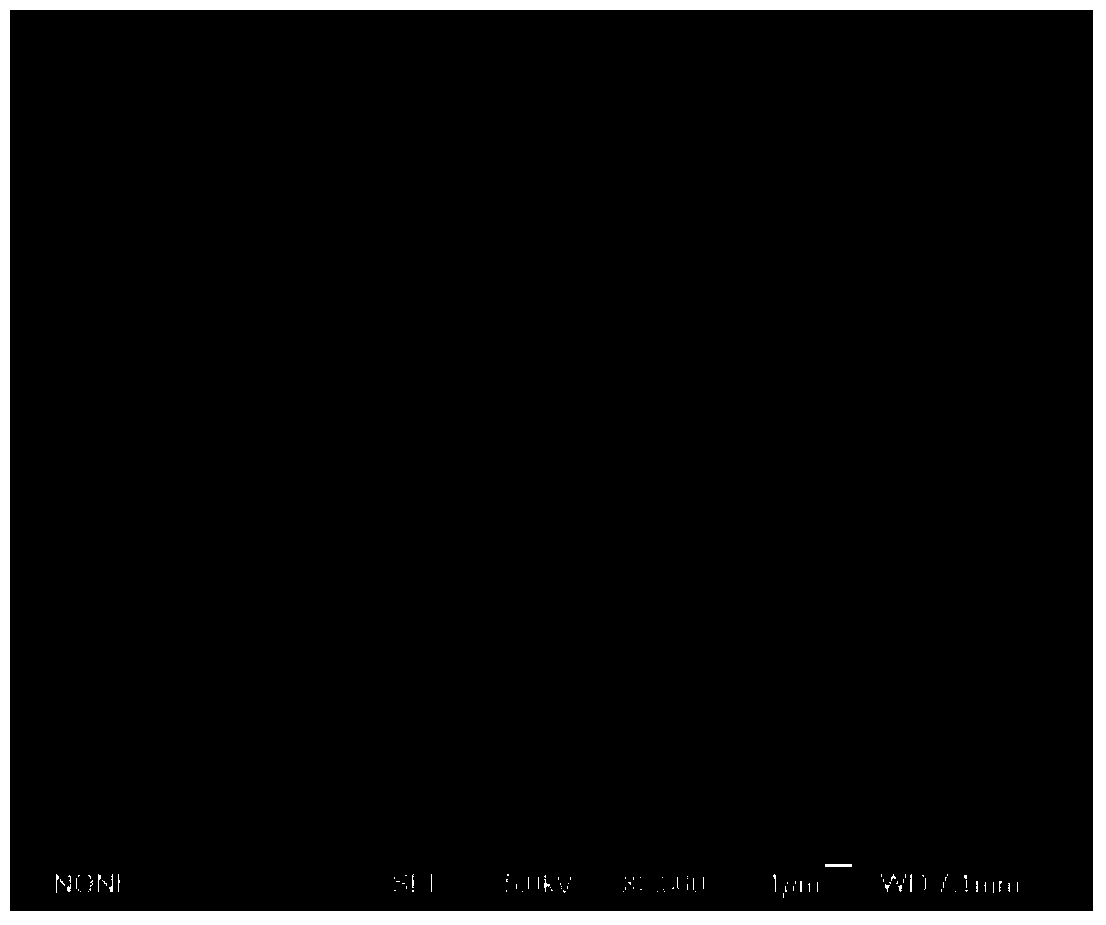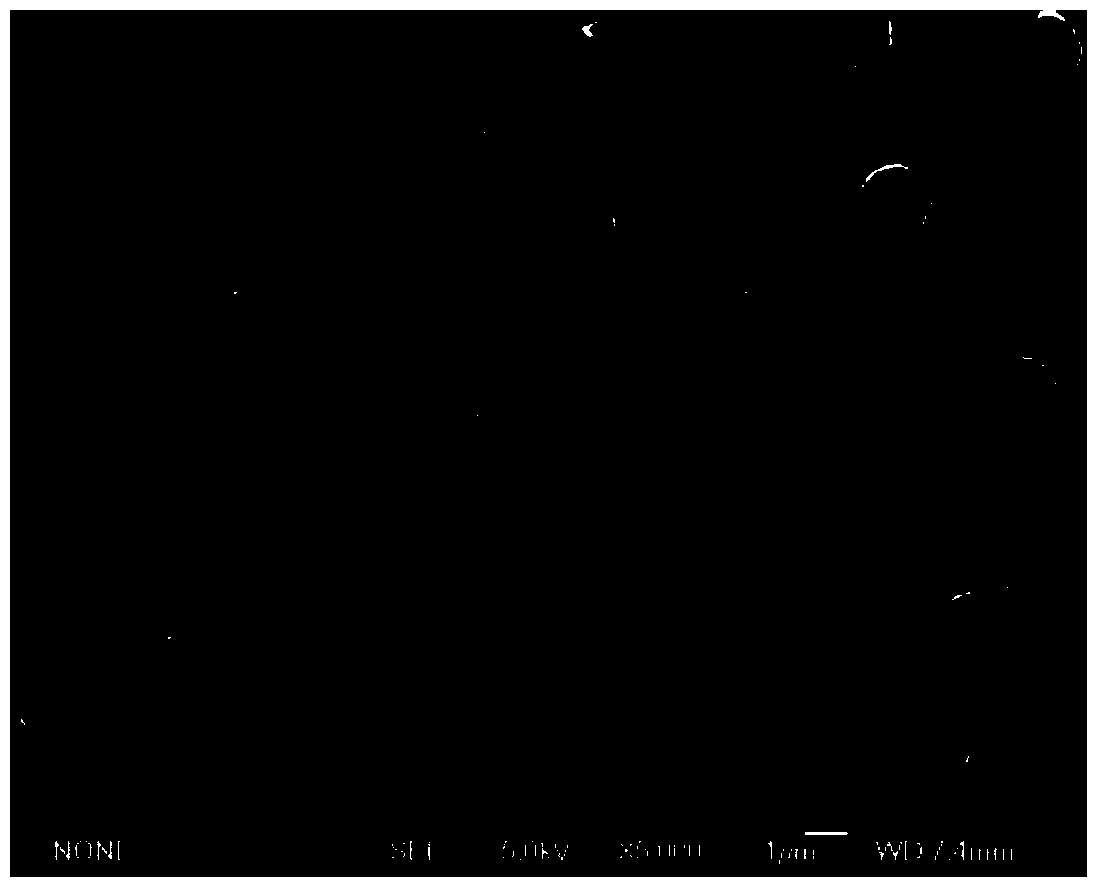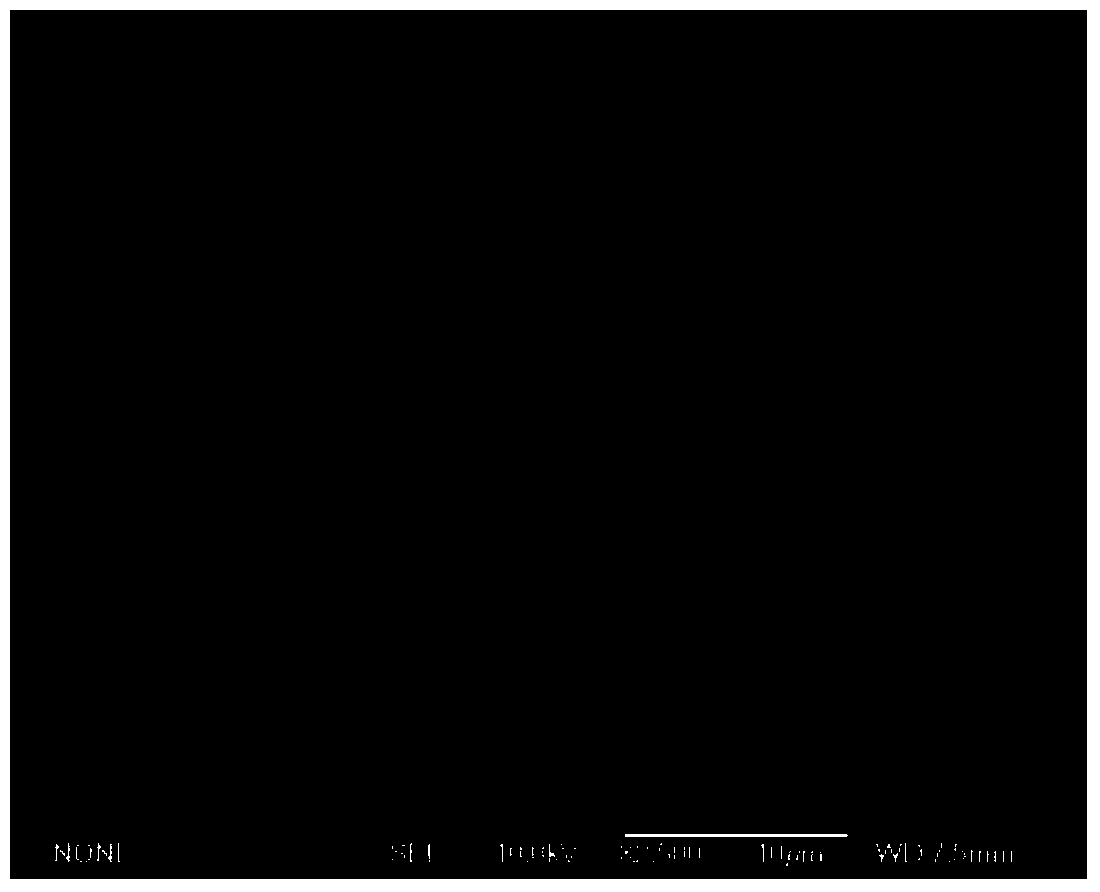Polymer porous membrane as well as preparation method and application thereof
A polymer and porous membrane technology, applied in the direction of mixing methods, chemical instruments and methods, dissolution, etc., can solve the problems of reduced uniformity of emulsion droplet or microsphere size, single group, hydrophobic and easy to fall off, etc.
- Summary
- Abstract
- Description
- Claims
- Application Information
AI Technical Summary
Problems solved by technology
Method used
Image
Examples
Embodiment 1
[0065] Reagents and solvents:
[0066] The polymer monomer is E51 epoxy resin, the porogen is a mixture of dimethyl sulfoxide (DMSO) and polyethylene glycol 300, the crosslinking agent is 4,4'-diaminodicyclohexylmethane, and the replacement solvent is desiccant ionized water.
[0067] Preparation process of polymer porous membrane:
[0068] Add E51 type epoxy resin, DMSO, PEG300, 4,4'-diaminodicyclohexylmethane with a molar ratio of 10:5:105:1 into the container and mix evenly, put it into the reaction container and seal it, at 30°C The polymerization reaction took place for 72 hours, and after the reaction was completed, the soluble matter such as the porogen was removed by extracting with deionized water, and a polymer porous membrane with a three-dimensional double continuous through-pore structure was obtained.
[0069] The microscopic morphology of the polymer porous membrane prepared above was observed with a scanning electron microscope. The result is as figure 1 As...
Embodiment 2
[0072] Reagents and solvents:
[0073] The polymerized monomer is 1,1,2,2-tetrakis[P-(2,3-epoxypropoxy)phenyl]ethane, and the porogen is N,N dimethylformamide (DMF) and ring Oxygenated soybean oil mixture, the crosslinking agent is 1,2-ethylenediamine, and the replacement solvent is dichloromethane.
[0074] Preparation process of polymer porous membrane:
[0075] 1,1,2,2-Tetrakis[P-(2,3-epoxypropoxy)phenyl]ethane, DMF, epoxidized soybean oil and 1, 2-Ethylenediamine was added into the container and mixed evenly, put into the reaction container and sealed, and the polymerization reaction occurred at 60°C for 10 hours. After the reaction was completed, the soluble matter such as porogen was removed by dichloromethane extraction, and the three-dimensional bismuth A polymer porous membrane with a continuous through-pore structure.
[0076] Observing the microscopic morphology of the polymer porous membrane prepared above with a scanning electron microscope, the obtained result...
Embodiment 3
[0079] The polymerization monomer is o-carboxyphenylacetic acid, the porogen is a mixture of anisole and dimethyl silicone oil, the crosslinking agent is glycerol, and the replacement solvent is toluene.
[0080] Preparation process of polymer porous membrane:
[0081] Add o-carboxyphenylacetic acid, anisole, simethicone and glycerol with a molar ratio of 10:1:21:1 into a container and mix evenly, put it into a reaction container and seal it, and polymerize at 90°C for 15 hours After the reaction is completed, the membrane is soaked in toluene, and soluble substances such as porogens are removed by ultrasonic waves, and a polymer porous membrane with a three-dimensional double continuous through-pore structure can be obtained.
[0082] Observing the microscopic morphology of the polymer porous membrane prepared above with a scanning electron microscope, the obtained results are as follows: image 3 As shown, it can be seen from the SEM photo that the material has a three-dime...
PUM
| Property | Measurement | Unit |
|---|---|---|
| Compressive strength | aaaaa | aaaaa |
| Aperture | aaaaa | aaaaa |
| Compressive strength | aaaaa | aaaaa |
Abstract
Description
Claims
Application Information
 Login to View More
Login to View More - R&D
- Intellectual Property
- Life Sciences
- Materials
- Tech Scout
- Unparalleled Data Quality
- Higher Quality Content
- 60% Fewer Hallucinations
Browse by: Latest US Patents, China's latest patents, Technical Efficacy Thesaurus, Application Domain, Technology Topic, Popular Technical Reports.
© 2025 PatSnap. All rights reserved.Legal|Privacy policy|Modern Slavery Act Transparency Statement|Sitemap|About US| Contact US: help@patsnap.com



